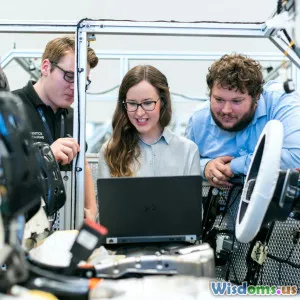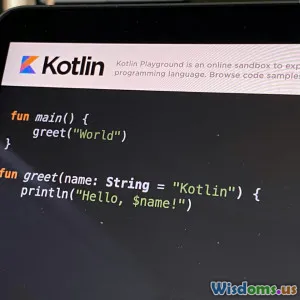
Three Trends Shaping Multiplayer Worlds in 2024
10 min read Explore three revolutionary trends transforming multiplayer gaming worlds in 2024, from AI innovation to immersive social experiences and cross-platform connectivity. (0 Reviews)
Three Trends Shaping Multiplayer Worlds in 2024
Multiplayer gaming has always been a hub of innovation and community, but 2024 marks a defining chapter in this evolution. The convergence of technology, player expectations, and creative game design is producing worlds that feel more alive, connected, and responsive than ever before. Whether it’s forming genuine social bonds or interacting with smarter, adaptive opponents, the landscape is rapidly shifting.
In this article, we dive into three groundbreaking trends shaping multiplayer worlds today: the rise of AI-powered interactions, the growth of truly immersive social ecosystems, and the seamless integration of cross-platform play. Each trend uniquely influences how developers craft experiences and how players engage with these vibrant digital realms.
1. Artificial Intelligence Elevates Player Interaction and Dynamic Worlds
Artificial intelligence (AI) has migrated beyond simple NPC behaviors to become a core driver shaping multiplayer experiences. In 2024, AI innovations lead to more immersive, realistic, and adaptive engagements.
Intelligent NPCs and Adaptive Storytelling
Gone are the days when non-player characters (NPCs) simply repeated canned dialogues or predictable actions. Today, AI algorithms allow NPCs to learn player behaviors, respond in nuanced ways, and even develop their own evolving story arcs. Games like Cyberpunk 2077: Phantom Liberty showcase NPCs that adjust to player choices dynamically, creating a multiplayer narrative depth previously unattainable.
This level of sophistication is powered by machine learning models running behind the scenes, enabling NPCs to anticipate player moves or collaborate strategically in team-based setups. According to industry analyst Jane Liu at Media Future Trends, “AI-driven NPCs add narrative complexity and sustain player interest by making in-game worlds feel genuinely alive. It’s no longer about static challenges but emergent storytelling.”
Smarter Matchmaking and Behavioral Analytics
AI does not only influence gameplay mechanics but also enhances the social matchmaking process. Modern multiplayer platforms leverage AI to analyze player skill, style, and behavioral data to create fairer, more enjoyable matches. For example, Riot Games’ AI matchmaking for Valorant factors psychological player profiles, improving team balance and long-term engagement metrics.
Artificial intelligence-driven cheat detection and moderation tools also help maintain healthier communities by detecting toxic behavior patterns in real time. This AI moderation is critical to ensuring positive multiplayer spaces, which directly impacts the longevity of games’ player bases.
Real-World Example: Ubisoft’s La Forge Lab
Ubisoft’s research division, La Forge, has been pioneering AI systems that merge player behavior data with procedural content generation. Their projects on personalized game worlds adapt terrain, challenges, and story elements on-the-fly based on AI analysis, enhancing multiplayer diversity and replayability.
2. Immersive Social Ecosystems Re-Define Community Building
Multiplayer gaming in 2024 isn’t solely about competition or cooperation—it’s about building enriched social environments that feel like second homes.
The Rise of Metaverse-Style Social Spaces
A key driver is the growth of metaverse-like environments blending gaming, social networking, and user-generated content. Platforms such as Roblox and Fortnite Creative have become social hubs, where players attend concerts, explore custom worlds, and express creativity beyond traditional gameplay.
This shift is supported by billions in investment from tech giants seeking to capitalize on the demand for immersive digital socialization. Meta (formerly Facebook) projects augmented and virtual reality spaces as core social experiences integrated with multiplayer ecosystems. As Wired magazine notes, “The multiplayer world is no longer just a game; it’s a virtual neighborhood and community gathering place.”
Deeper Player Connection Through User-Created Content
The democratization of content tools empowers players to shape the experiences they share. User-generated game modes, environments, skins, and interactive elements cultivate a sense of ownership and belonging.
A compelling example is the success of Dreams on PlayStation, where players have crafted sprawling multiplayer arenas, social hangouts, and narrative-driven adventures, all interconnected in an evolving ecosystem.
Psychological Benefits: From Casual Play to Lifelong Friendships
Social scientists studying multiplayer worlds report that these immersive ecosystems foster meaningful relationships and emotional wellbeing. A 2023 survey by the Digital Interaction Institute found 58% of players regarded their multiplayer communities as critical anchors for social interaction, especially post-pandemic.
For game developers, nurturing these ecosystems means investing in cache features like integrated voice chat, rich avatar customization, and event-driven experiences to create a vibrant communal atmosphere.
3. Seamless Cross-Platform Connectivity Expands Player Access and Engagement
Multiplayer gaming’s future is undeniably open and interconnected. In 2024, cross-platform play has become standard practice, with technological advances removing barriers that limited players to single ecosystems.
Universal Player Pools and Reduced Fragmentation
Historically, players on different consoles or devices faced divided multiplayer communities. Today, games such as Call of Duty: Modern Warfare II enable frictionless cross-play across Xbox, PlayStation, PC, and mobile, bringing together global player bases in unified servers.
This universal access intensifies matchmaking pools and shortens wait times, necessary for sustaining thriving multiplayer ecosystems. It also fosters diversity in gameplay styles and expands communities beyond traditional platform walls.
Cloud Gaming’s Role in Platform Fluidity
Cloud gaming services like NVIDIA GeForce Now, Xbox Cloud Gaming, and Google Stadia enhance cross-platform experiences by streaming games directly to a variety of devices without powerful hardware requirements.
This democratization of access means players can transition effortlessly from smartphones to PCs or consoles without losing progress or community continuity. According to Newzoo’s 2024 Global Games Market Report, cloud gaming revenues are expected to surge by 45% this year, reflecting this growing trend.
Challenges and Innovations
Despite its benefits, cross-platform play introduces complexities such as network latency differences, control scheme disparities, and fair competitive balancing. Developers innovate by designing sophisticated input filtering, adaptive net code, and customizable matchmaking parameters to mitigate these challenges.
Epic Games contributed significantly to this movement via Fortnite, pioneering cross-play integration early on while maintaining equitable gameplay mechanics and frequent updates to harmonize player experiences.
Conclusion: A Connected, Intelligent, and Social Multiplayer Future
As we reflect on these three trends — AI-enhanced worlds, immersive social ecosystems, and seamless cross-platform connectivity — it’s clear multiplayer gaming in 2024 is more vibrant and inclusive than ever.
Developers harness cutting-edge AI to create smarter, more reactive environments and players. Social ecosystems reshape digital worlds into bustling hubs of creative expression and human connection. Meanwhile, cross-platform capabilities dissolve technological boundaries, inviting a broader, more diverse player population.
For gamers, these advancements mean richer narratives, deeper friendships, and never-before-seen freedom to engage anywhere, anytime. For industry stakeholders, understanding and leveraging these trends is essential to thriving in a highly competitive market focused on player retention and experience innovation.
As you dive into multiplayer realms this year, look for these pioneering features and consider how they enrich your gameplay and community interactions. The multiplayer universe of 2024 is not just a game — it’s a living, evolving ecosystem crafted by technology, creativity, and human connection.
“In multiplayer gaming, the future belongs to worlds where AI learns alongside you, social spaces become homes, and no console or device feels like a boundary.” — Gaming Futurist, Dr. Elena Marquez
Embrace the momentum, stay engaged, and explore the endless possibilities that these trends bring to your multiplayer experiences this year.
Rate the Post
User Reviews
Popular Posts




















